Osteographia, or the Anatomy of the Bones. By William Cheselden Surgeon to Her Majesty; F.R.S. Surgeon to St. Thomas's Hospital, and a Member of the Royal Academy of Surgery at Paris.
2 volumes, folio (482 x 328 mm). Volume with text: engraved title with vignette printed in bistre and the British Royal arms on the verso, engraved dedication “To the Queen” with an engraved deer skeleton on verso, 25 ll of letterpress text incorporating 10 engraved headpieces, 10 initials and 10 tailpieces, 9 full-page illustrations, 1 full-page tail-piece printed in bistre. 56 numbered engraved plates each with integral letters and facing letterpress key with explananatory text; Volume of plates: engraved title with vignette (verso blank), 56 numbered engraved plates (duplicates of the plates in the volume with text, but with no letters or facing text), the final plate with an engraved deer skeleton on verso. All engravings by Jacob Schijnvoet and Gerard van der Gucht. Modern black morocco-backed marbled paper-covered boards with vellum tips by Hales, spine in seven compartments with raised bands, the bands emphasized by gilt tooling, red/ brown morocco lettering-piece in the second compartment, circular onlaid red/brown morocco disc with the volume number in the fourth, cadduceus and book symbol in sventh compartment. Condition : lacking a frontispiece, ten leaves with a repaired cut which divides each leaf in half horizontally (with occasional loss of a few characters), some other neat marginal reapairs, some old soiling, the final 10 plates in the volume of plates with old dampstaining and recent restoration to the upper outer corners. rare and beautiful: one of 400 sets of the first edition of "the most famous and among the most artistically interesting osteological atlases ever produced . . . The great accuracy of the large plates of adult, fetal, and pathological bones lies both in Cheselden's innovative use of the camera obscura, which he was the first to employ for the purpose of book illustration, and in his intervention in the drawing and engraving processes" (Norman). Despite Cheselden’s connections, and the beauty of the work, it was not an immediate success: the author notes in his preface “to the Reader” that a lack of subcribers forced him to abandon his original plan for a much more extensive work, and that he had no “more printed in english than three hundred [copies of the present work], and one hundred [sets] of prints are taken off designed for a latin or french edition, which being finished, the plates shall be destroyed”. Blake p.86; Choulant-Frank, p.261; Garrison-Morton 395; Heirs of Hippocrates 814; Lilly p.107; Norman 466; Russell 173; Waller 1941; Wellcome II, p. 335.
Osteographia, or the Anatomy of the Bones. By William Cheselden Surgeon to Her Majesty; F.R.S. Surgeon to St. Thomas's Hospital, and a Member of the Royal Academy of Surgery at Paris.
2 volumes, folio (482 x 328 mm). Volume with text: engraved title with vignette printed in bistre and the British Royal arms on the verso, engraved dedication “To the Queen” with an engraved deer skeleton on verso, 25 ll of letterpress text incorporating 10 engraved headpieces, 10 initials and 10 tailpieces, 9 full-page illustrations, 1 full-page tail-piece printed in bistre. 56 numbered engraved plates each with integral letters and facing letterpress key with explananatory text; Volume of plates: engraved title with vignette (verso blank), 56 numbered engraved plates (duplicates of the plates in the volume with text, but with no letters or facing text), the final plate with an engraved deer skeleton on verso. All engravings by Jacob Schijnvoet and Gerard van der Gucht. Modern black morocco-backed marbled paper-covered boards with vellum tips by Hales, spine in seven compartments with raised bands, the bands emphasized by gilt tooling, red/ brown morocco lettering-piece in the second compartment, circular onlaid red/brown morocco disc with the volume number in the fourth, cadduceus and book symbol in sventh compartment. Condition : lacking a frontispiece, ten leaves with a repaired cut which divides each leaf in half horizontally (with occasional loss of a few characters), some other neat marginal reapairs, some old soiling, the final 10 plates in the volume of plates with old dampstaining and recent restoration to the upper outer corners. rare and beautiful: one of 400 sets of the first edition of "the most famous and among the most artistically interesting osteological atlases ever produced . . . The great accuracy of the large plates of adult, fetal, and pathological bones lies both in Cheselden's innovative use of the camera obscura, which he was the first to employ for the purpose of book illustration, and in his intervention in the drawing and engraving processes" (Norman). Despite Cheselden’s connections, and the beauty of the work, it was not an immediate success: the author notes in his preface “to the Reader” that a lack of subcribers forced him to abandon his original plan for a much more extensive work, and that he had no “more printed in english than three hundred [copies of the present work], and one hundred [sets] of prints are taken off designed for a latin or french edition, which being finished, the plates shall be destroyed”. Blake p.86; Choulant-Frank, p.261; Garrison-Morton 395; Heirs of Hippocrates 814; Lilly p.107; Norman 466; Russell 173; Waller 1941; Wellcome II, p. 335.



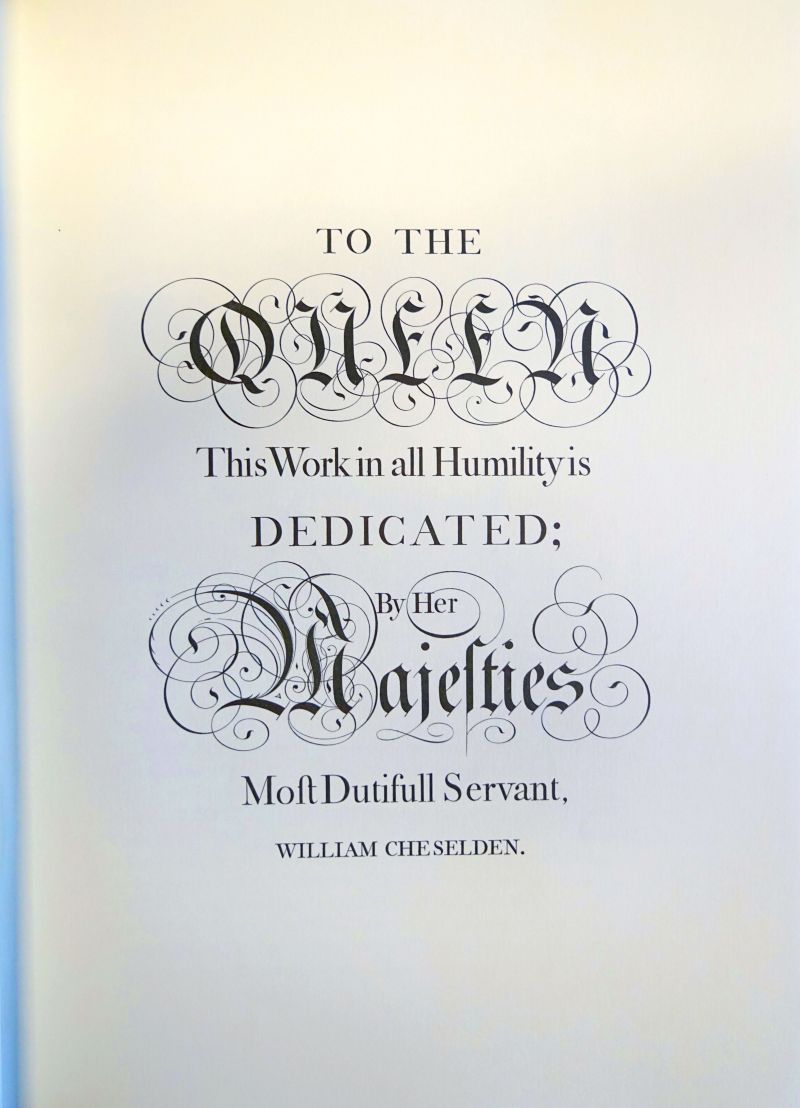


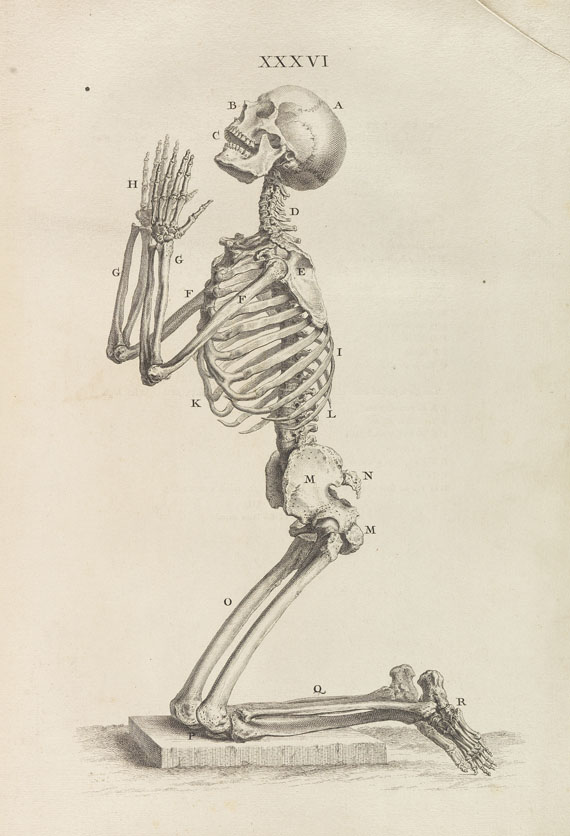



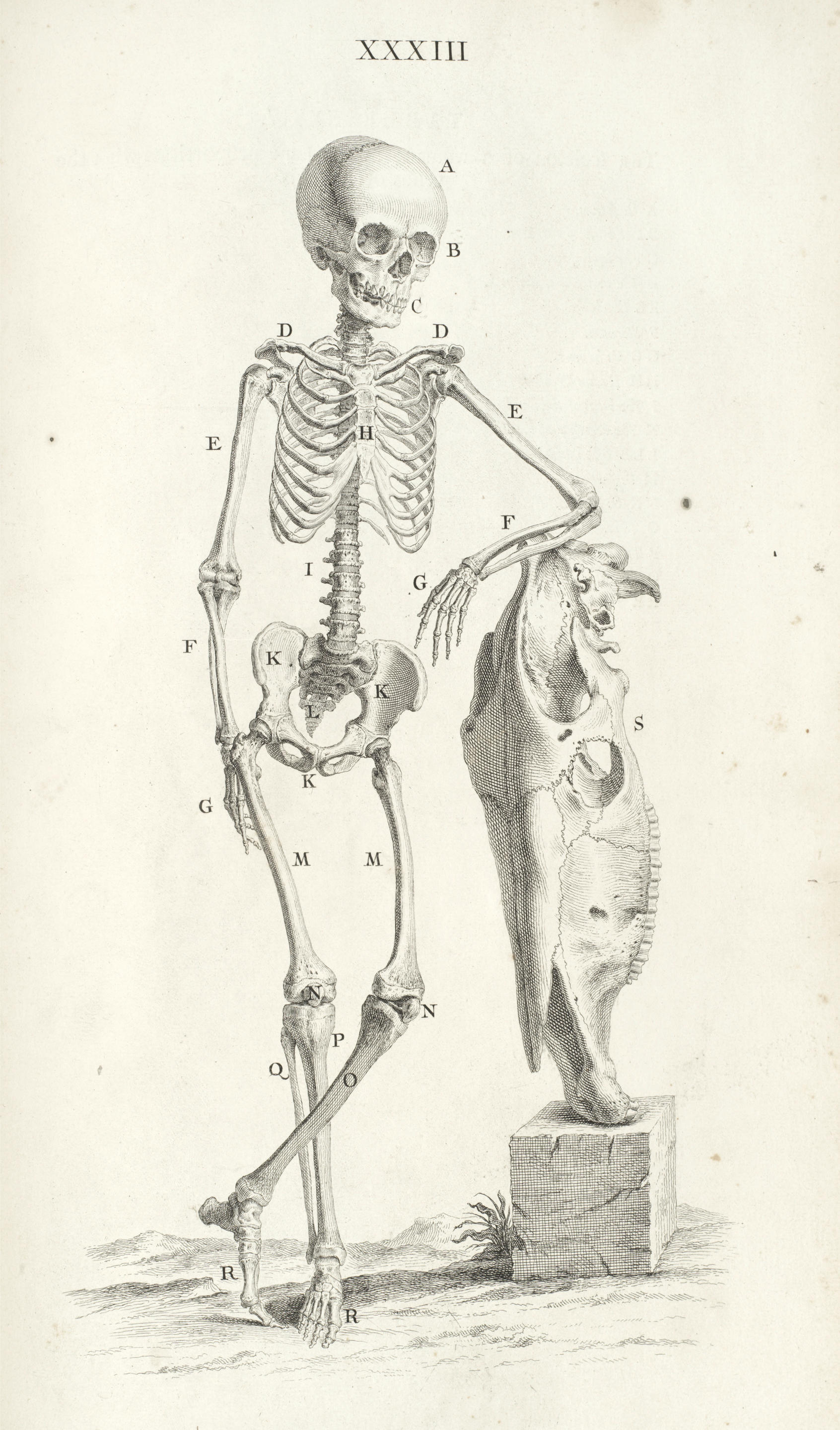
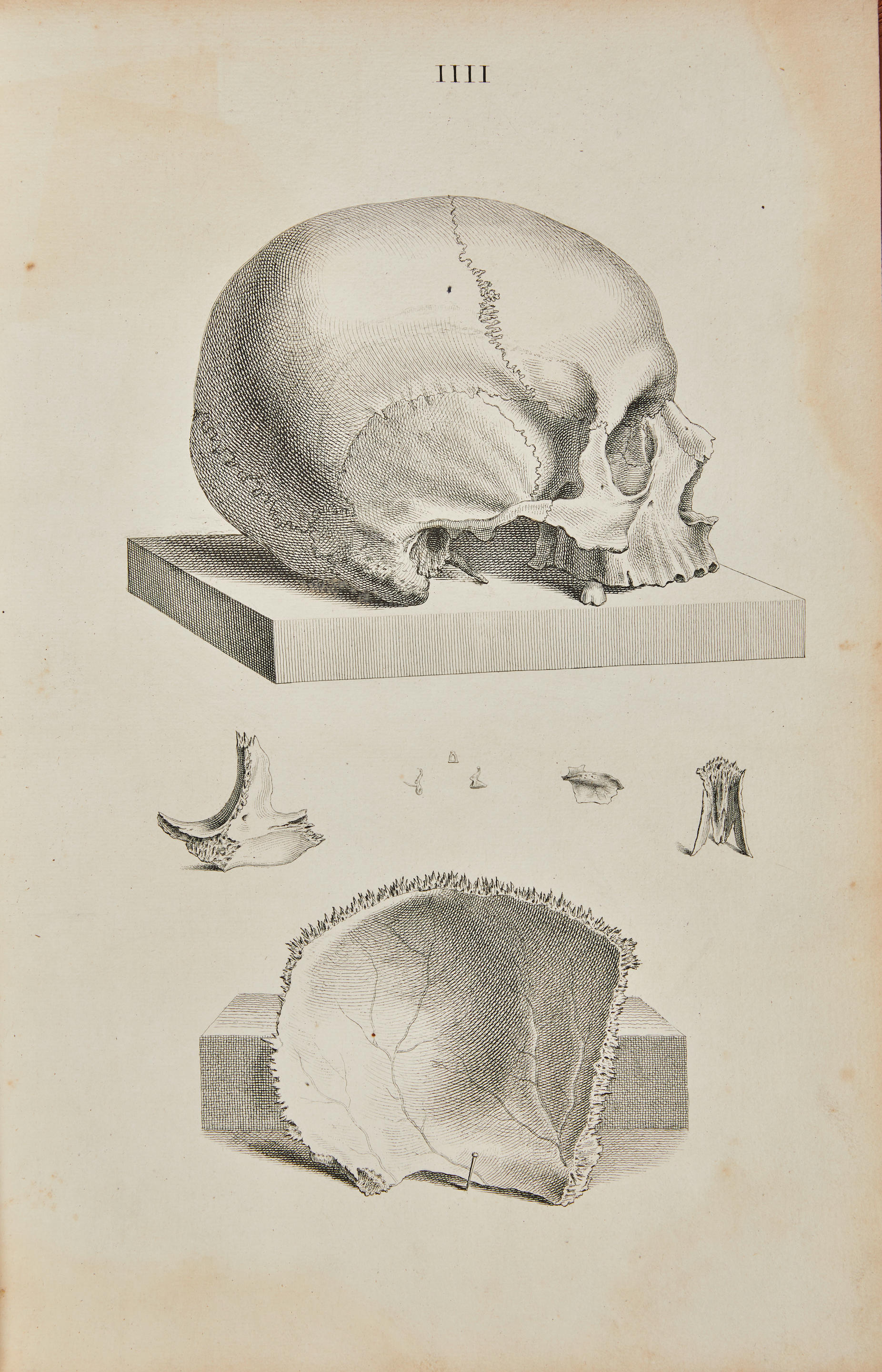
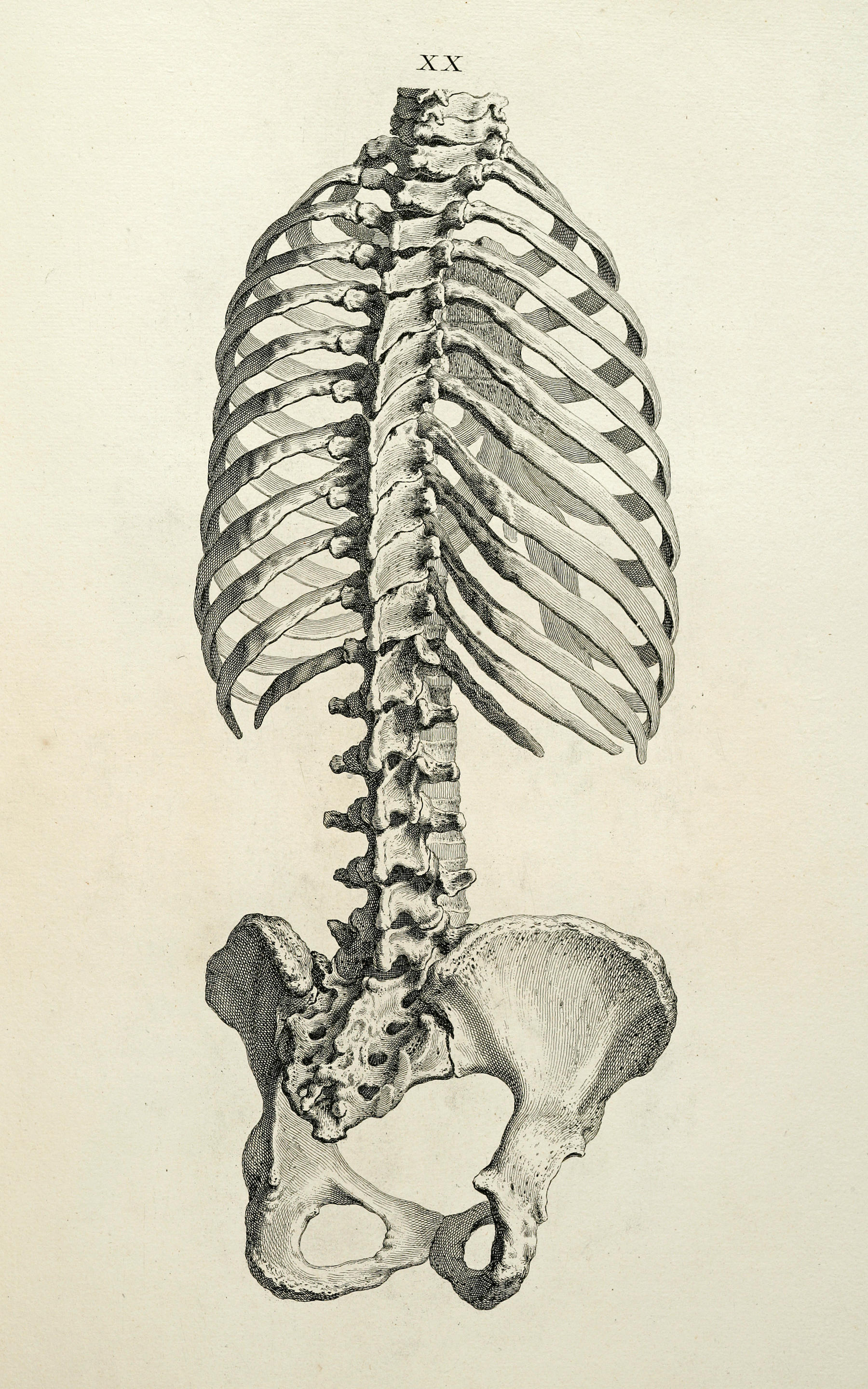

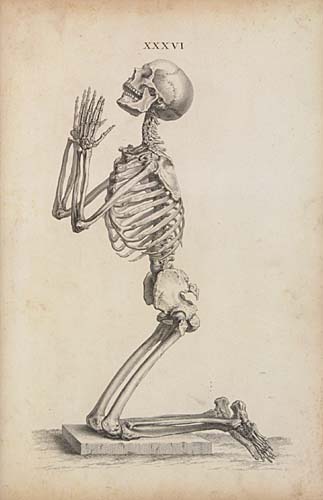
Try LotSearch and its premium features for 7 days - without any costs!
Be notified automatically about new items in upcoming auctions.
Create an alert